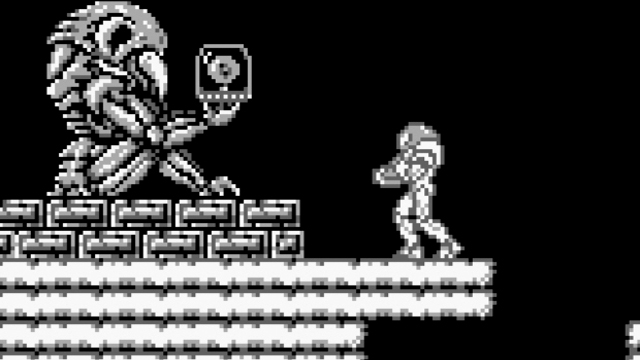
I imagine that shortly after the release of any successful video game, the idea of a sequel comes up in conversation among the developers. What can we improve? What can we add? What can we do differently? The pressure of these questions likely leads to the scrapping of many sequels, and even the ones that do make it through this rigorous first phase don’t always end up matching their predecessor’s quality. This leads some developers to say, “Why don’t we just try something different?” and it’s this mentality that leads to some of the most interesting sequels of all. Nintendo had this mentality when making sequels to many of its biggest franchises, and although some of these concepts were never revisited, the changes these games had on their respective franchises can never be forgotten.
Super Mario Bros. 2
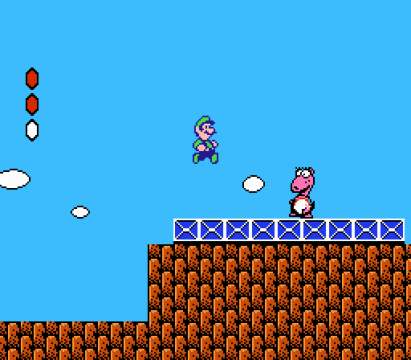
To clear things up right from he start, yes, I mean the American Super Mario Bros. 2, not the original Super Mario Bros. 2 (also known as The Lost Levels) that was released in Japan. Although that is the official second game in the series, it was more of an expansion than a sequel, and is not what I think of when I think Super Mario Bros. 2. Adding to the confusion is the fact that this game is actually a Mario-ized version of the Japan only game Yume Kōjō: Doki Doki Panic. But perhaps all of that history isn’t important. What’s important is that, regardless of origin, Super Mario Bros. 2 is an amazing game that introduced a variety of enemies and ideas that are now series staples. Right from the start, the game gives you the option to choose between four characters. At the time, there were only five known characters in the Mario series, Bowser being the only one not playable in Mario 2. This was a neat feature, made even cooler when players realized that each character had different skills. Toad was fast, Peach could float, Luigi jumped highest, and Mario was average at everything.
But this wasn’t the only part of the game that was immediately different. In fact, everything was different. The art style was less pixelated, with a wider variety of detail in character and enemy sprites. Players had a health bar that could be built up, allowing them to take more than two hits. Enemies couldn’t be killed by jumping on them and instead needed to be thrown or hit with an object. Strangest of all were the boss fights, each of which was against a different baddie, with no Bowser in sight! No doubt excited fans were thrown for a loop by this odd game, but that didn’t keep them from loving it, making it one of the highest selling games on NES, and its influence can be felt in just about every Mario game since. It introduced popular enemies like Shy Guys, Pokey, Birdo, Bob-omb, and many more. It gave Luigi his reputation for high jumping. It was the first Mario game to give the option of carrying objects. On top of it all, it kept up the series’ tradition of fantastic platforming. Its themes were revisited in last year’s Super Mario 3D World, proving that even after all this time, Super Mario Bros. 2‘s foundation is still solid.
Zelda II: The Adventure of Link
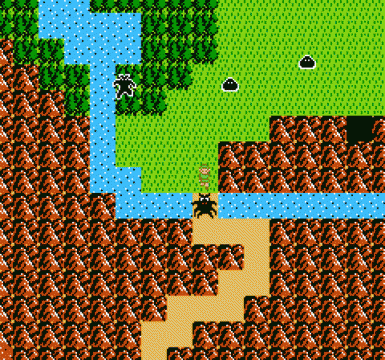
As far as sequels go, they don’t get much different than Zelda II: The Adventure of Link. The Legend of Zelda was a top-down action adventure game with light RPG mechanics. Zelda II was a tough as nails side-scrolling action RPG with light Legend of Zelda mechanics. You still entered dungeons, found items, and fought baddies with a sword and shield, but the way you did these things was vastly changed (and arguably, vastly improved). The top-down view was utilized only when traversing the overworld. When you ran into an enemy, you entered an RPG-like battle scene. But instead of turn-based encounters, you fought the enemies in real time. This meant mastering a wealth of new combat abilities, from crouch stabs to shield blocks, to downward stabs and various spells. Instead of watching the enemies wander the screen, waiting from them walk into your blade, enemies are smartly designed with fast attacks and varied movesets that will keep the player on their toes.
Zelda II is one of the earliest examples of the action RPG, and its combat undoubtedly influenced the more complex battle systems seen in later entries like Twilight Princess and Skyward Sword. One major mechanic introduced in Zelda II that has been seen time and time again is the magic bar, as well as the idea of spells. Though the magic bar has been ditched by more recent entries, it still led to cool spells like Din’s Fire and Quake in older titles. This was also the first Zelda game to feature towns full of helpful villagers and secrets. But the game’s most memorable addition to the Zelda series is undoubtedly its final boss, Dark Link, who has made appearances as a mini-boss in many Zelda games, and an Easter Egg in others. Though the side-scrolling style of Zelda II has never been attempted again in a major Zelda title, many of the handheld Zelda games have have simplified side-scrolling sections that are reminiscent of this unique sequel.
Metroid II: Return of Samus
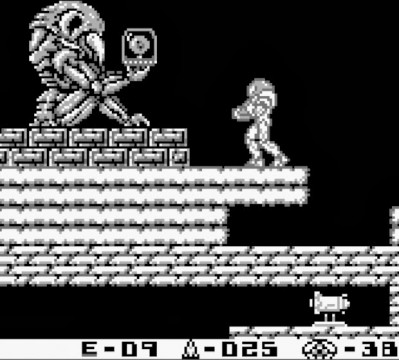
Of all the games on this list, Metroid II: Return of Samus is probably the most similar to its predecessor. It was still a side-scrolling action game starring bounty hunter Samus Aran on her mission to eradicate an alien threat from a foreign planet. You wander blindly through a labyrinth-like cave with only your environment to guide you. You fire lasers and missiles at enemies, gaining strength through power-ups scattered throughout the world. Many things were the same, but a few key changes and additions made Metroid II stand out. First of all was the system. Nintendo took a chance with this sequel, putting on its new handheld system, the Game Boy. The result of this change was a more zoomed in view of the world, and a more detailed Samus. This game gave us a clearer idea of what Samus’s suit looked like, and set the standard for the now famous Varia Suit design as the series moved forward. Some popular items introduced in this game include the Spazer, Spring Ball, Plasma Beam, and the Spider Ball.
This game also introduced the idea of progressive environments, requiring you to defeat certain bosses (or enemies) before you could continue in the game. In Metroid II, Samus is tasked with eradicating the planet of every living Metroid. The entire game consists of your hunting down these increasingly powerful Metroids, eventually coming face to face with the Queen. This game is one of the most atmospheric in the series, and truly gives the player a taste of what it’s like to be a lone hunter on a planet full of deadly enemies. These were all features that I thought originated in Super Metroid, but in many ways Metroid II paved the way for that game’s near perfect design.
Super Mario World 2: Yoshi’s Island
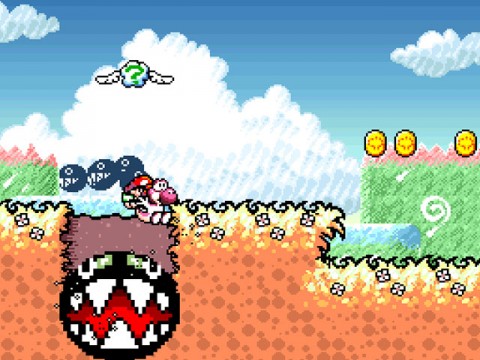
Much like Super Mario Bros. 2, Super Mario World 2: Yoshi’s Island keeps the foundation of its series in place (fantastic platforming) while toying with the way the game is played. Following the introduction of Mario’s dinosaur pal in its predecessor, Yoshi’s Island puts the Yoshis in the spotlight, letting you play as them for the whole game, with Mario along for the ride. As you might expect, Yoshi controls very differently than Mario. In fact, he even controls differently than the Yoshis from Super Mario World. This game introduced Yoshi’s trademark moveset, including his flutter jumping, egg firing, and ground pounding. These elements have been synonymous with Yoshi ever since, influencing future Yoshi games as well as his appearances in games like Super Smash Bros.
One thing that set Yoshi’s Island apart from the first Mario World was the style of its levels. Instead of just being a straightforward, run for the goal, pure platforming game, the levels in Yoshi’s Island frequently incorporated more puzzles and maze-like areas alongside the challenging platforming sections. It also included an all new attack in the form of egg shots, allowing players to get inventive and skillful with the way they dispatched opponents. This game was so good it spawned into its own series, but not before it left its mark on the Mario series forever. Oh yeah, and I can’t talk about Yoshi’s Island in an article without mentioning the fantastic Yoshi’s Island Athletic Theme, so please go give it a listen!
Mother 2 (EarthBound)
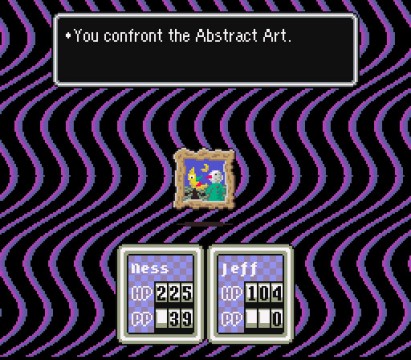
The most immediately strange thing about Mother 2, or EarthBound, is that when it first released, most of us didn’t know it was a sequel at all. Since the first game never came to the United States, fans had no idea what to expect from this goofy JRPG (outside of some strange advertisement put together by Nintendo). This game is certainly strange, but I would rather call it unique, choosing to shrug off most JRPG conventions in favor of creating a completely original, tremendously charming video game.
But unlike the other games on this list, it isn’t gameplay changes that had the massive effect on the Mother franchise. Instead, it was the simple act of releasing the game that had a surprising effect. EarthBound was an oddball JRPG that Nintendo took a chance on and in some ways it was a failure. It didn’t sell well, and never garnered enough attention to give Nintendo a reason to localize the other Mother games. What Nintendo probably didn’t realize was that this game would quickly earn a cult following, one that would eventually become one of the strongest in all of gaming, with fans willing to beg day and night for another chance to show their love for EarthBound, the little RPG that could. After years of begging, Nintendo finally gave in, re-releasing EarthBound for the Wii U Virtual Console where it immediately shot to number one on the best sellers list. The fans were grateful, but one success gave new hope for another, and now they spend their days praying for an official release of EarthBound‘s wonderful sequel, Mother 3. Will Nintendo give the people what they want yet again? I hope so!
Improving on the formula of a successful game is one way to go about producing a sequel, but these five games show us that you can make something just as good if you are willing to try something new. What are some of your favorite strange sequels? Maybe Resident Evil 4, with its over the shoulder view? Or Super Paper Mario and its action oriented battles? Let us know in the comments below!




 ShareThis
ShareThis







Wario Land was another game that saw some huge upheavals after its first installment. I think the titles that deviate a lot, like some of the ones on this list, are the most interesting because they take the hugest risks.
It’s tough to think of Metroid Prime as “odd” now, but I can’t be the only one who was terrified at the prospect of the beloved series going first-person. What about all the vertical areas, the jump attacks and fending off enemies in all directions? Even when the reviews were in and everyone loved the game, it wasn’t until I played through the opening area that I was actually convinced it could work.
The truly clever lock-on battles and new interpretations of existing movement upgrades (spider ball became magnetic, space jump and screw attack became more about range than flight, etc) grew Metroid into something new while keeping true to its roots.
Prime became its own sub-series. Hunters further spun off into multiplayer Quake territory. Other M used first-person view for puzzles and missile attacks. But what we want most now is either another Super Metroid style sidescroller or another Metroid Prime style first-person adventure. I’d say that qualifies as changing the series pretty dramatically. :^)
Yeah Metroid Prime was definitely one that came to mind, though I tried to stick to second entries and Prime was a reboot. But yep I agree completely, at the time the idea of Metroid becoming a first person shooter was totally bewildering. Its shocking how good that game turned out though! Definitely in competition with Super Metroid for the best game in the series.
The game I’m listing was never released on a Nintendo console… but it’s effects were clearly felt by Nintendo fans. Symphony of the Night led to a massive change for the Castlevania series of games, and was the inspiration for several top-notch GBA and DS entries later on.